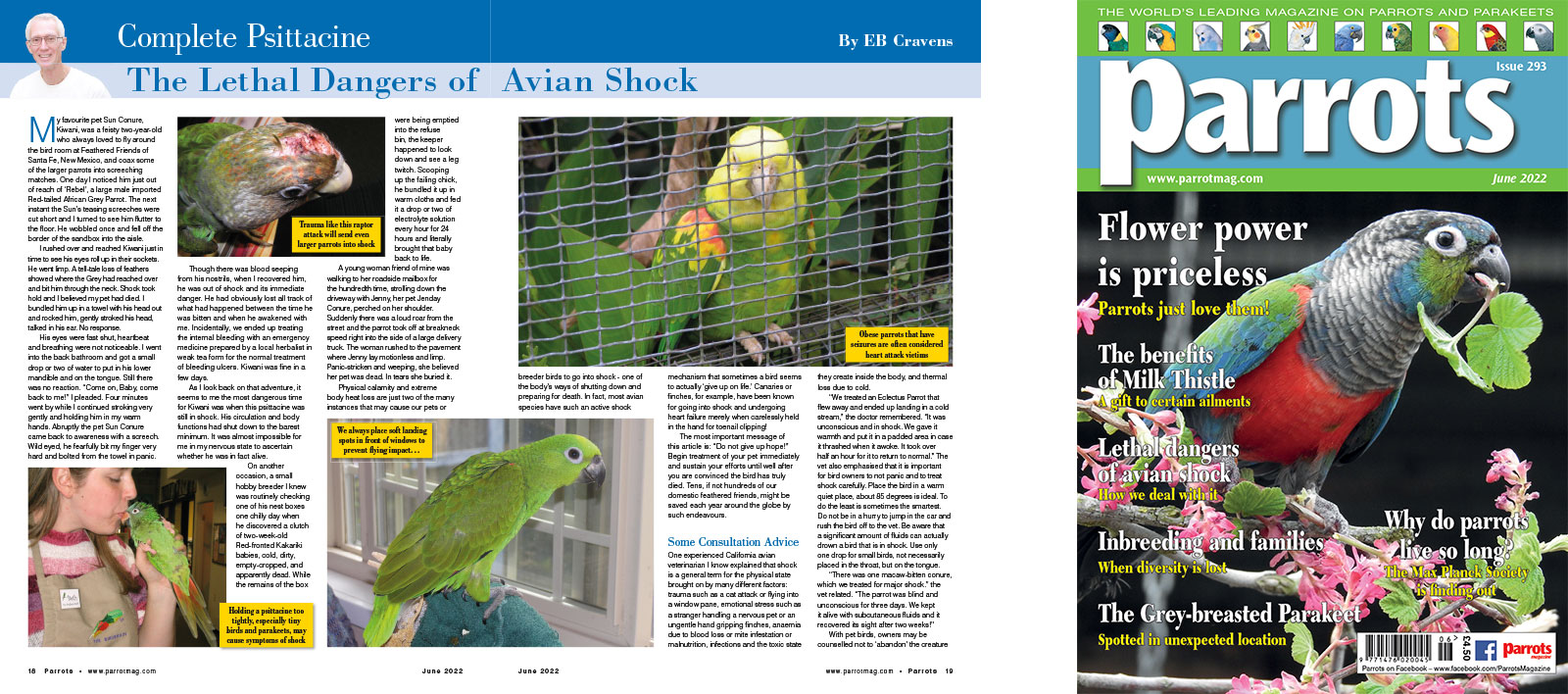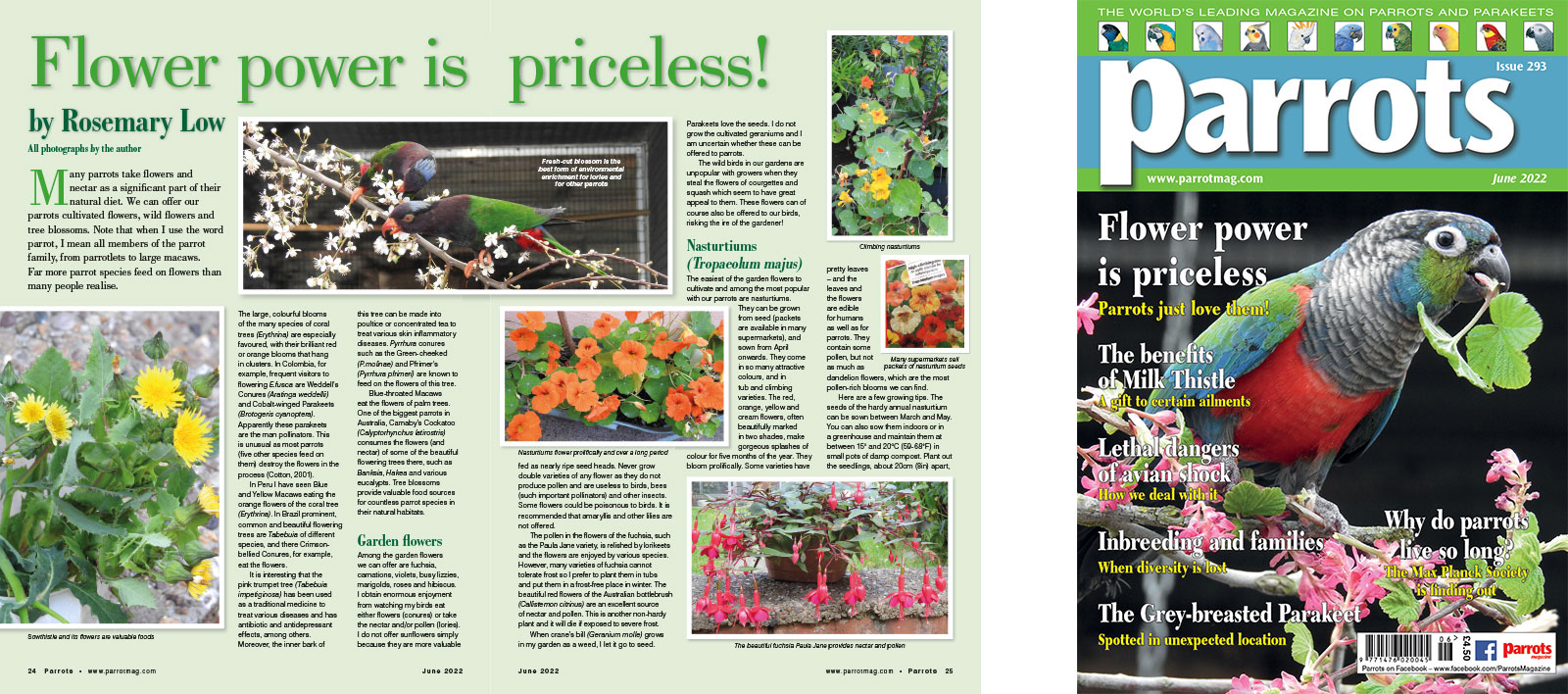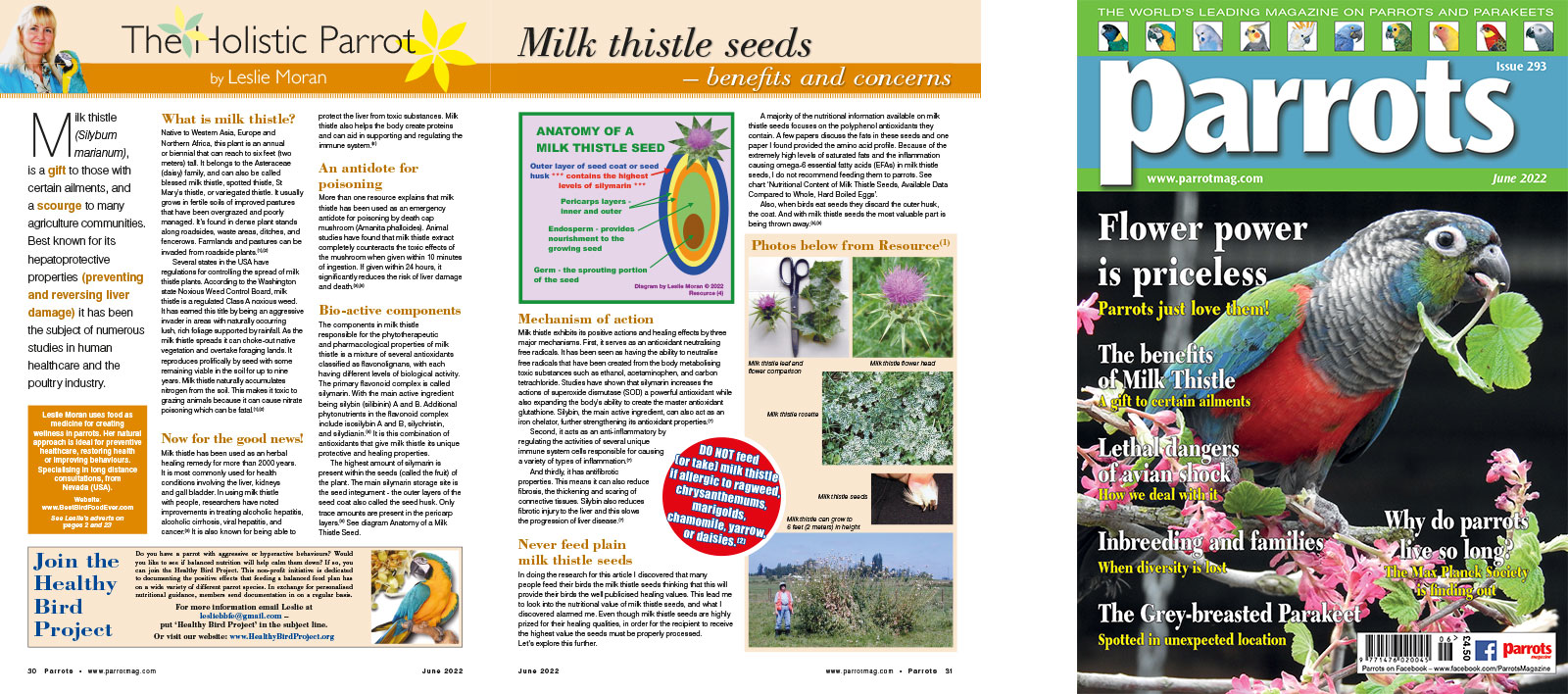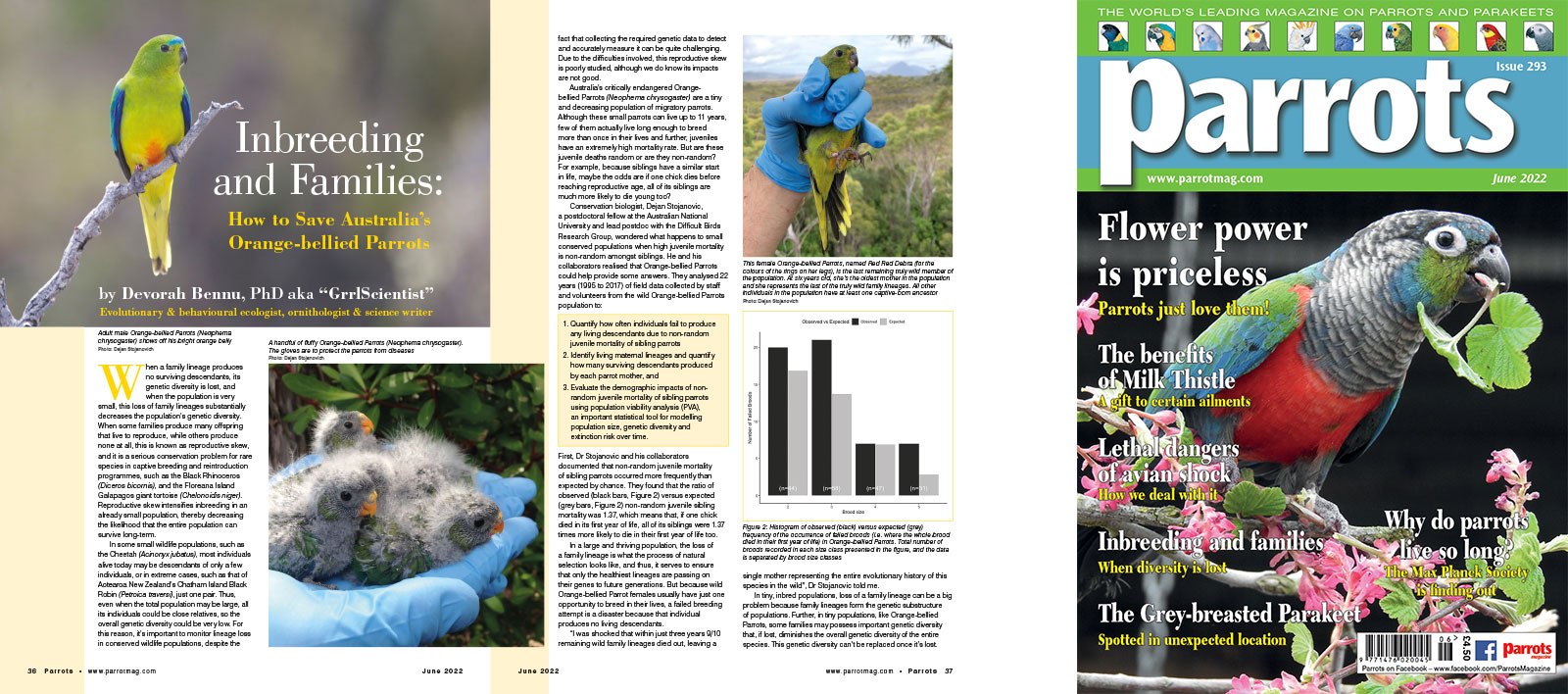
Complete Psittacine by Eb Cravens
My favourite pet Sun Conure, Kiwani, was a feisty two-year-old who always loved to fly around the bird room at Feathered Friends of Santa Fe, New Mexico, and coax some of the larger parrots into screeching matches. One day I noticed him just out of reach of ‘Rebel’, a large male imported Red-tailed African Grey Parrot. The next instant the Sun’s teasing screeches were cut short and I turned to see him flutter to the floor. He wobbled once and fell off the border of the sandbox into the aisle.
I rushed over and reached Kiwani just in time to see his eyes roll up in their sockets. He went limp. A tell-tale loss of feathers showed where the Grey had reached over and bit him through the neck. Shock took hold and I believed my pet had died. I bundled him up in a towel with his head out and rocked him, gently stroked his head, talked in his ear. No response.
His eyes were fast shut, heartbeat and breathing were not noticeable. I went into the back bathroom and got a small drop or two of water to put in his lower mandible and on the tongue. Still there was no reaction. “Come on, Baby, come back to me!” I pleaded. Four minutes went by while I continued stroking very gently and holding him in my warm hands. Abruptly the pet Sun Conure came back to awareness with a screech. Wild eyed, he fearfully bit my finger very hard and bolted from the towel in panic.
Buy Now!

By Rosemary Low
Many parrots take flowers and nectar as a significant part of their natural diet. We can offer our parrots cultivated flowers, wild flowers and tree blossoms. Note that when I use the word parrot, I mean all members of the parrot family, from parrotlets to large macaws. Far more parrot species feed on flowers than many people realise.
The large, colourful blooms of the many species of coral trees (Erythrina) are especially favoured, with their brilliant red or orange blooms that hang in clusters. In Colombia, for example, frequent visitors to flowering E.fusca are Weddell’s Conures (Aratinga weddellii) and Cobalt-winged Parakeets (Brotogeris cyanoptera). Apparently these parakeets are the man pollinators. This is unusual as most parrots (five other species feed on them) destroy the flowers in the process (Cotton, 2001).
In Peru I have seen Blue and Yellow Macaws eating the orange flowers of the coral tree (Erythrina). In Brazil prominent, common and beautiful flowering trees are Tabebuia of different species, and there Crimson-bellied Conures, for example, eat the flowers.
Buy Now!

The Holistic Parrot by Leslie Moran
Milk thistle (Silybum marianum), is a gift to those with certain ailments, and a scourge to many agriculture communities. Best known for its hepatoprotective properties (preventing and reversing liver damage) it has been the subject of numerous studies in human healthcare and the poultry industry.
Native to Western Asia, Europe and Northern Africa, this plant is an annual or biennial that can reach to six feet (two meters) tall. It belongs to the Asteraceae (daisy) family, and can also be called blessed milk thistle, spotted thistle, St Mary’s thistle, or variegated thistle. It usually grows in fertile soils of improved pastures that have been overgrazed and poorly managed. It’s found in dense plant stands along roadsides, waste areas, ditches, and fencerows. Farmlands and pastures can be invaded from roadside plants.
Several states in the USA have regulations for controlling the spread of milk thistle plants. According to the Washington state Noxious Weed Control Board, milk thistle is a regulated Class A noxious weed. It has earned this title by being an aggressive invader in areas with naturally occurring lush, rich foliage supported by rainfall. As the milk thistle spreads it can choke-out native vegetation and overtake foraging lands. It reproduces prolifically by seed with some remaining viable in the soil for up to nine years. Milk thistle naturally accumulates nitrogen from the soil. This makes it toxic to grazing animals because it can cause nitrate poisoning which can be fatal.
Buy Now!

by Devorah Bennu, PhD aka “GrrlScientist”
When a family lineage produces no surviving descendants, its genetic diversity is lost, and when the population is very small, this loss of family lineages substantially decreases the population’s genetic diversity. When some families produce many offspring that live to reproduce, while others produce none at all, this is known as reproductive skew, and it is a serious conservation problem for rare species in captive breeding and reintroduction programmes, such as the Black Rhinoceros (Diceros bicornis), and the Floreana Island Galapagos giant tortoise (Chelonoidis niger). Reproductive skew intensifies inbreeding in an already small population, thereby decreasing the likelihood that the entire population can survive long-term.
In some small wildlife populations, such as the Cheetah (Acinonyx jubatus), most individuals alive today may be descendants of only a few individuals, or in extreme cases, such as that of Aotearoa New Zealand’s Chatham Island Black Robin (Petroica traversi), just one pair. Thus, even when the total population may be large, all its individuals could be close relatives, so the overall genetic diversity could be very low. For this reason, it’s important to monitor lineage loss in conserved wildlife populations, despite the fact that collecting the required genetic data to detect and accurately measure it can be quite challenging. Due to the difficulties involved, this reproductive skew is poorly studied, although we do know its impacts are not good.
Australia’s critically endangered Orange-bellied Parrots (Neophema chrysogaster) are a tiny and decreasing population of migratory parrots. Although these small parrots can live up to 11 years, few of them actually live long enough to breed more than once in their lives and further, juveniles have an extremely high mortality rate. But are these juvenile deaths random or are they non-random? For example, because siblings have a similar start in life, maybe the odds are if one chick dies before reaching reproductive age, all of its siblings are much more likely to die young too?
Buy Now!




